On 4 December 2018, the ECOFIN adopted the so-called Quick Fixes, to operate as of 1 January 2020. The Quick Fix on intra-Community supplies of goods sees the purchaser’s VAT-ID-No. as being a mandatory requirement for zero-rating (exemption with credit).
On 4 December 2018, the ECOFIN adopted the so-called Quick Fixes, to operate as of 1 January 2020. The Quick Fix on intra-Community supplies of goods sees the purchaser’s VAT-ID-No. as being a mandatory requirement for zero-rating (exemption with credit). This will also apply to intra-Community transfers of goods, which are deemed to be supplies of goods. However, the VAT Directive does not stipulate input VAT deduction from intra-Community transfers of goods subject to VAT. Therefore, many business transactions, entered into in accordance with Art. 17 para 2 of the VAT Directive, which are usually outside the scope of VAT, are now threatened with a definitive VAT burden, if the requirements of the Article can no longer be met.
- Background
On 4.12.2018, the ECOFIN adopted the so-called Quick Fixes, which will come into force as of 1.1.2020. The Quick Fixes will include the provision on zero-rating for intra-Community supplies of goods (Art. 138 of the VAT Directive) being tightened up. In future, intra-Community supplies of goods will only be zero-rated if the purchaser is registered for VAT purposes in the Member State of destination. Further, the supply must be correctly reported in the EC Sales List. The VAT-ID-No., listed in the VAT Information Exchange System (VIES), is therefore a mandatory requirement for zero-rating. Later registration will probably not have any retroactive effect.
- Consequences for intra-Community supplies
If the above-mentioned requirements are not met, intra-Community supplies of goods will be subject to VAT – unless another exemption applies. The supplier is basically liable for the payment of the VAT. He bears the risk that the purchaser does not pay the VAT, as well as the tax risk in circumstances where he incorrectly treats the supply of goods as zero-rated. The purchaser remains obligated to VAT register in the Member State of destination. The VAT taxation in the Member State of departure does not affect the scope of the intra-Community acquisition in the Member State of destination. On the other hand, the purchaser should be entitled to deduct the invoiced tax as input VAT. If he is VAT registered in the Member State of departure, it is possible for him to deduct the input VAT in his periodical VAT return; otherwise, the Refund Directive, formerly 8th Directive VAT refund procedure may apply – but see article 4 (b) of that Directive. If the purchaser is not entitled to full input VAT deduction, double taxation may arise as a result of the VAT taxation in the Member State of departure and the acquisition VAT in the Member State of destination. If the reverse charge scheme applies, there may be an additional obligation to VAT register in the Member State of departure.
- Consequences for intra-Community transfer of goods and temporary use of goods
To date, there has been no consideration given to the application of the amendment to intra-Community transfers of goods. A transfer of goods requires that a taxable person transports business goods, which are at its own disposal, into another Member State, e.g. for tolling. Such transfers are deemed to be intra-Community supplies of goods if certain conditions are not respected. The requirements for zero-rating therefore apply mutatis mutandis. If the taxable person is not VAT registered in the Member State of destination, the transfer of goods will, in future, be subject to VAT in the Member State of departure. However, the VAT Directive does not stipulate input VAT deduction on intra-Community transfers of goods subject to VAT.
A transfer of goods may also be subject to VAT if the requirements for a temporary use of goods ultimately cease to be met. In the case of a temporary use of goods, the taxable person also transports business goods, which are at its own disposal, to another Member State. However, due to the additional circumstances, the transfer of goods is, from a VAT perspective, irrelevant. E.g. this applies where the goods are the subject of a supply of service or are used for the supply of a service in another Member State. However, it is required that the goods are returned to the Member State of departure. The temporary use of goods therefore does not stipulate an obligation to VAT register in the other Member State. If, however, the requirements for the temporary use of goods cease to be met, the taxable person realizes, simultaneously, an intra-Community transfer of goods. If the taxable person, as permitted by law, was not, at the relevant time, VAT registered in the Member State of destination, this transfer of goods is subject to VAT without input VAT deduction.
- Consequences for the practice
Although the amended wording of Art. 138 of the VAT Directive only concerns intra-Community supplies of goods, it has a wider impact. It applies to intra-Community transfers of goods and, indirectly, also to temporary use of goods in other Member States. The latter is, without generally being noticed as such, a component of many procedures within the intra-Community movement of goods which are not considered intra-Community supplies of goods. This applies e.g. to supplies of goods including installation, property-related supplies of services, tolling and even distance sales (see Art. 17 para. 2 letters b, g, f, and a of the VAT Directive) and, in future, also to consignment supplies of goods (see the new Art. 17a of the VAT Directive).
Taxable persons are recommended to use the year 2019 to check their intra-Community movement of goods and the VAT treatment thereof. The following steps may assist in this regard:
- Is the customer master data accurate and up to date? In particular, if the invoice-to address deviates from the ship-to address it must be ensured that the customer’s VAT-ID-No. is available. VAT-ID-Nos. of third parties (e.g. subcontractors, warehouses of affiliates) are not sufficient.
- Are there any unidentified constellations of intra-Community transfer of goods that stipulate an obligation to register in another EU Member State? If a domestic subcontractor transfers items to another Member State, the transfer of goods is assigned to the principal entitled to dispose of the goods.
- Are goods, being temporarily used, transferred to other EU Member States? What measures can be taken to retain conformity with the requirements for the temporary use of goods?
Taxable persons are recommended to secure the measures in a procedural manner. They should also amend supply contracts as well as their terms of sale and purchase.
The above information was kindly provided by Küffner Maunz Langer Zugmaier, Germany. If you need any further information you can contact Jörg Scharrer, email to: [email protected].

